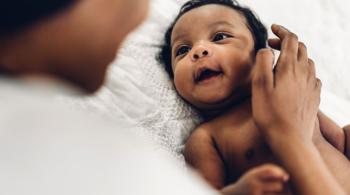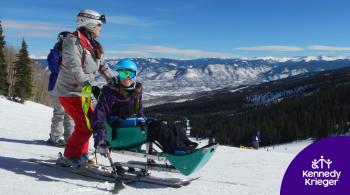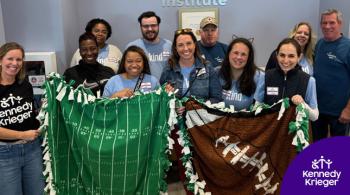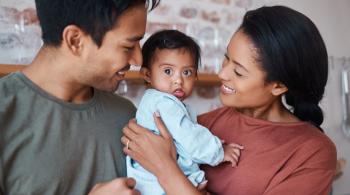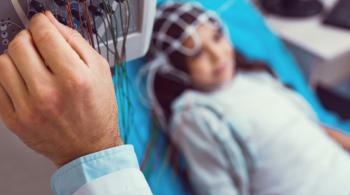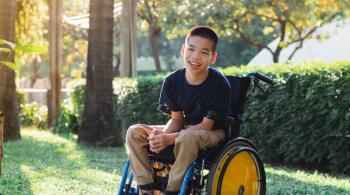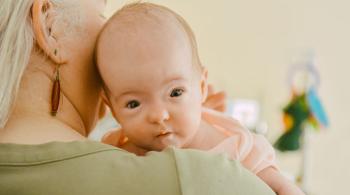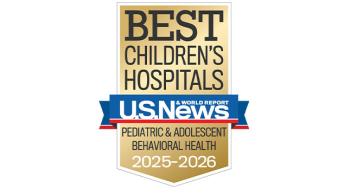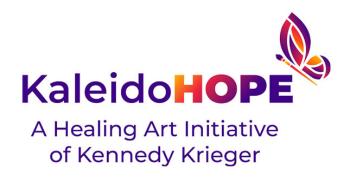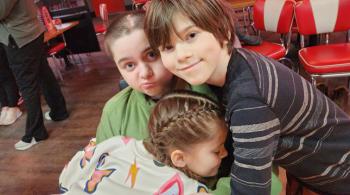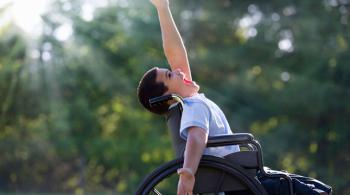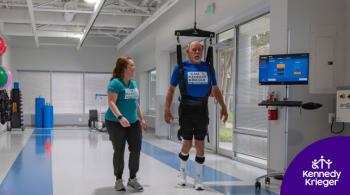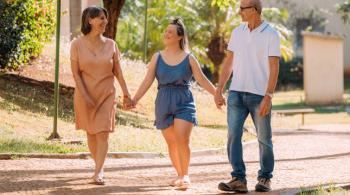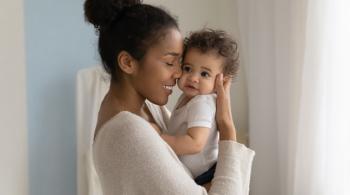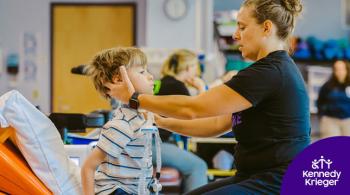A surge of applause erupted through the auditorium as Hailey approached the stage at her Florida high school’s graduation ceremony last May.
Two of her physical therapists supported her—one on either side. Her steps were halting, but determined, as she moved slowly, step by step, across the stage. As the school principal handed Hailey her diploma, the cheers swelled and Hailey’s joyful face beamed. The journey to this celebratory moment was not easy.
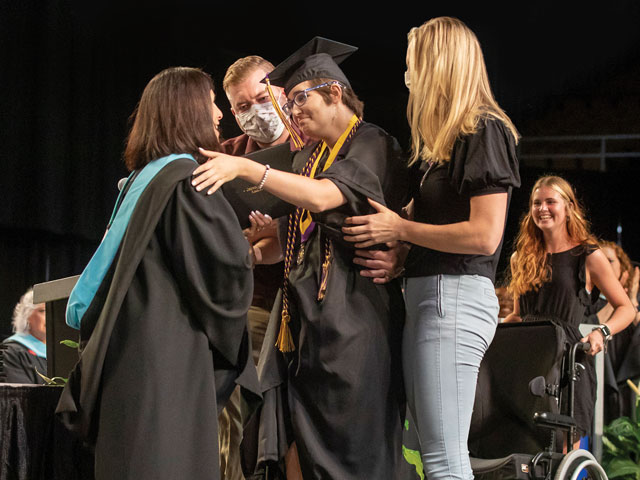
A little over a year ago, Hailey was a typical high school junior. She’d set her sights on earning an associate degree while still in high school, to put herself on the fast track to becoming an anesthesiologist. These dreams came to an abrupt halt when she suffered a brain aneurysm while she slept. A series of surgeries addressed her brain’s bleeding and swelling. Because of the constant care Hailey needed, her family made sure someone was by her bedside, 24/7.
Eventually, her condition stabilized. But her parents, Robin and Dan, felt unprepared for the level of care Hailey would need after being discharged from acute care. Their search led them to Kennedy Krieger Institute, both for its reputation for helping patients with brain injuries, as well as its convenience—it was a direct flight from their home near Tampa to Baltimore’s airport, allowing them to tag-team care of Hailey and their other two children back home in Florida.
Robin and Dan were so relieved once Hailey was at Kennedy Krieger’s inpatient rehabilitation hospital and receiving full-time care again. But their relief was short-lived: A few days later, her brain functioning started to deteriorate further, and she was transferred to The Johns Hopkins Hospital, just a few blocks away. Doctors determined Hailey’s brain was producing excess fluid and that she would need another surgery.
We were just floored by how good they were with her.” – Robin
Slow But Steady Progress
After several weeks of recovery at the Johns Hopkins Children’s Center, Hailey returned to Kennedy Krieger. Finally, she was ready for the Institute’s team of specialists to begin helping her recover the communication and motor skills she had lost due to her brain injury. Her interdisciplinary team included speech-language pathologist Dana Wanyo, physical therapist Heather McLean and occupational therapist Danielle Gilboy.
“Dana, Heather and Danielle were absolutely stunning,” Robin recalls. “Hailey was still extremely disabled when she was at Kennedy Krieger, but we were just floored by how good they were with her.”
Yet initial progress was slow, as Hailey’s brain continued to heal.
“When Hailey first came to us, she was pretty much dependent on us for all her mobility,” McLean says. “She needed full support for transitions, sitting, transfers and standing.”
Her communication, too, was nearly nonexistent. “Hailey didn’t really have a lot of responsiveness to her environment at first,” Wanyo says. “She didn’t turn her head if you called her name. She had no way to communicate. She couldn’t gesture or vocalize.”
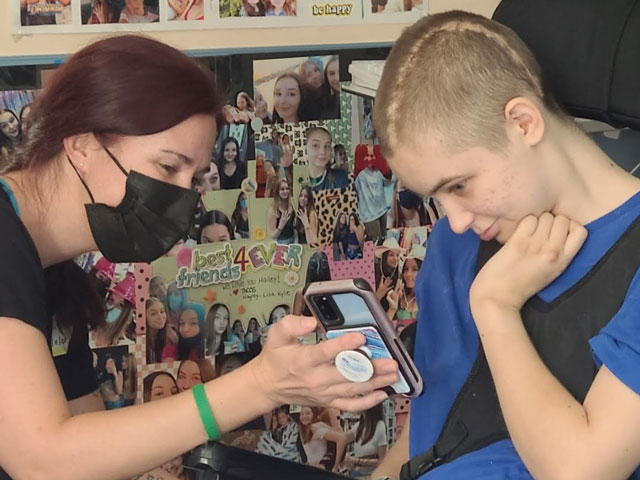
Understandably, seeing Hailey so unresponsive was very hard on her parents. Dan remembers the moment they saw a glimmer of hope that their daughter was returning to them.
“Hailey and Heather were doing a sitting exercise, and Hailey had the 1,000-mile stare and wasn’t overly responsive to anything except pain,” Dan remembers. During the exercise, Heather put her hands on Hailey’s head and asked her questions only Hailey and her family knew the answers to. Heather felt the minuscule head movements Hailey was trying to make and translated them to “yes” or “no.” To Dan’s surprise, every answer was correct. “Dan was floored when it happened time and time again,” Robin recounts. At that point, Dan realized, “Hailey was in there; she was just really locked in her body.”
“We felt it was proof that Hailey was in there—just really trapped,” Robin adds.
These glimmers of hope continued to build, as Hailey continued to heal. McLean helped her relearn how to activate the muscles in her legs and torso. Her communication improved, too.
“She started to show more expression,” Wanyo says. “She was able to smile at things that were funny, particularly with her parents and their family jokes. And she also was a little bit more consistent with answering yes-or-no questions.”
Meanwhile, Gilboy helped Hailey with daily living skills like eating and brushing her teeth, to help her function more independently once she got home.
“Progress was slow, but she made great gains overall during her inpatient stay,” Gilboy says. “For example, she went from requiring total assistance to get dressed, to being able to get her shirt on and off with very minimal assistance. She was such a hard worker and never gave up. When therapy became tough, she was always down for an arm wrestle—which she always won!—or a few licks from a lollipop to lighten the mood.”
The Journey Continues
After two months of rehabilitation, Hailey’s Kennedy Krieger team determined she was ready for outpatient therapy back home in Florida, at the Child Development and Rehabilitation Center at Johns Hopkins All Children’s Hospital in St. Petersburg.
Hailey admits that physical therapy is hard, but that doesn’t change her determination to reach her next goal: walking unassisted. And after that? Attending college.
“Hailey is stubborn in all of the best ways,” Robin says. “She’s very strong-willed and works really hard. I think she’s going to make a really good recovery, which we weren’t sure she’d be able to do a year ago. After everything she’s been through, I feel like the sky is the limit!”
By Laura Farmer

